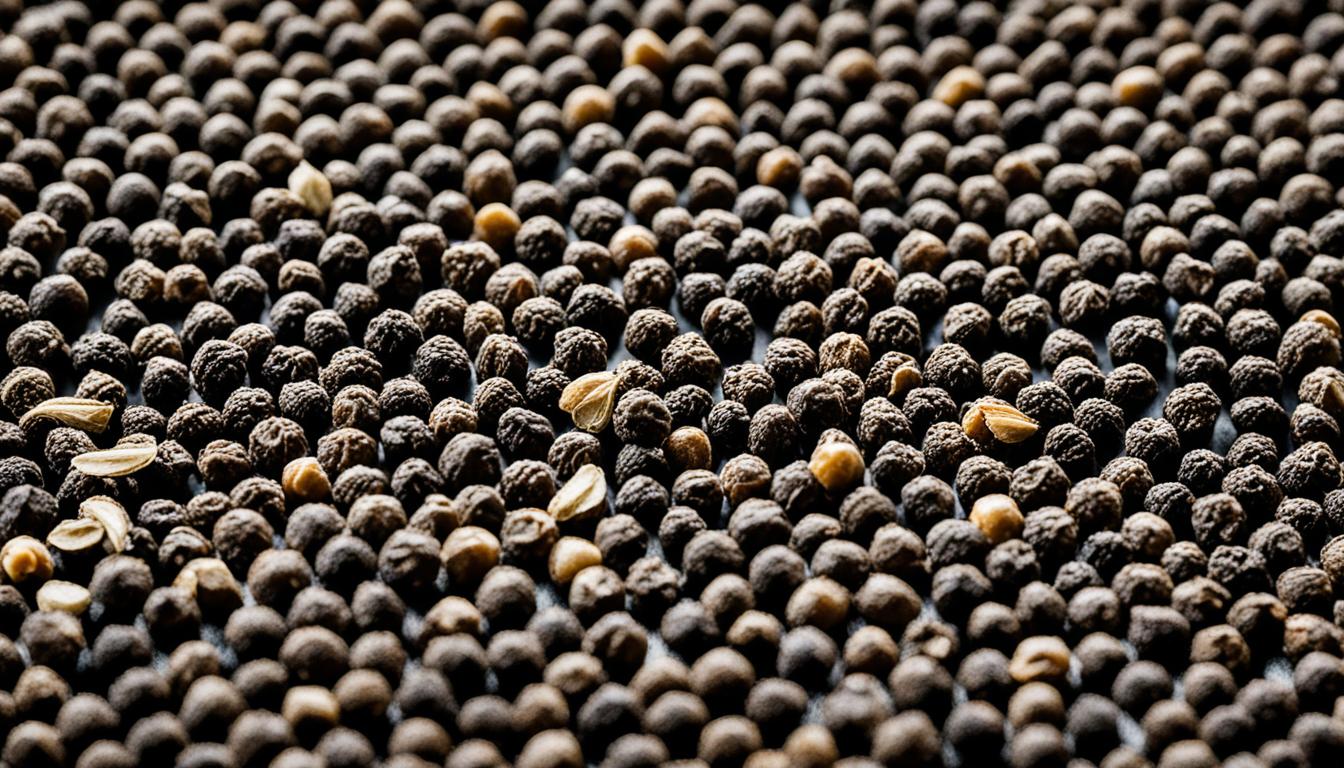I love using black pepper in my cooking. It makes even simple dishes taste amazing. Black pepper can make any meal better, from savory to sweet.
We’ll look at how to use black pepper in cooking and baking. You’ll learn about its history, health perks, and how to pick and store it. This spice is great for anyone, whether you’re a pro or just starting out. It’s a secret way to make your food more exciting.
The Versatility of Black Pepper in Cooking
Black pepper is a key ingredient in many dishes. It adds depth and complexity. A great example is black pepper chicken. This dish is a favorite that you can make at home. It has tender chicken in a sweet and saucy black pepper sauce.
Black Pepper Chicken: A Restaurant-Style Favorite at Home
This black pepper chicken recipe is simple and easy to make. It’s perfect for busy nights or casual meals. The dish is coated in a savory-sweet sauce. This sauce brings out the bold flavors of black pepper in every bite.
Adapting the Recipe with Different Proteins and Vegetables
Black pepper is not just for chicken. You can swap the chicken with pork or beef. You can also add veggies like broccoli, carrots, or bell peppers. This makes the dish versatile for any taste or diet.
“Black pepper is the unsung hero in the world of cooking. Its ability to enhance and elevate a dish is truly remarkable.”
Craving black pepper chicken or want to try new protein substitutions and vegetable additions? Black pepper makes your dishes full of flavor and depth.
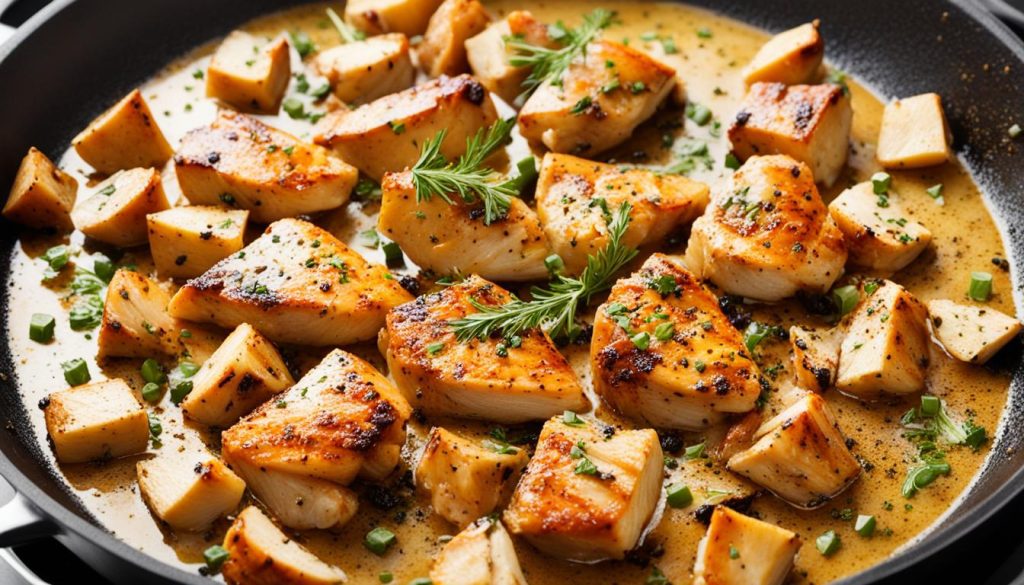
From Farm to Table: Exploring the Origins of Black Pepper
I love learning about black pepper’s history and its journey around the world. This spice comes from the Malabar coast in southern India. It’s been a key part of local food and trade for hundreds of years.
Black pepper’s story starts with ancient spice routes from India. These routes took it to the Persian Gulf, the Red Sea, and then to Rome and Egypt. It was so valuable, people even used it as money.
| Region | Black Pepper’s Significance |
|---|---|
| Malabar Coast, India | Native home of black pepper, integral to local cuisine and Indian spice trade |
| Ancient Trade Routes | Black pepper traveled from India to Persian Gulf, Red Sea, and Mediterranean markets |
| Global Distribution | Black pepper became a highly sought-after spice, even used as currency |
Now, black pepper is grown all over the world. But its roots in the Malabar coast still give it a special taste and cultural importance. Learning about black pepper’s history shows how it has changed food and trade across the globe.
“Black pepper has been a prized spice for millennia, shaping trade routes and culinary traditions around the world.”
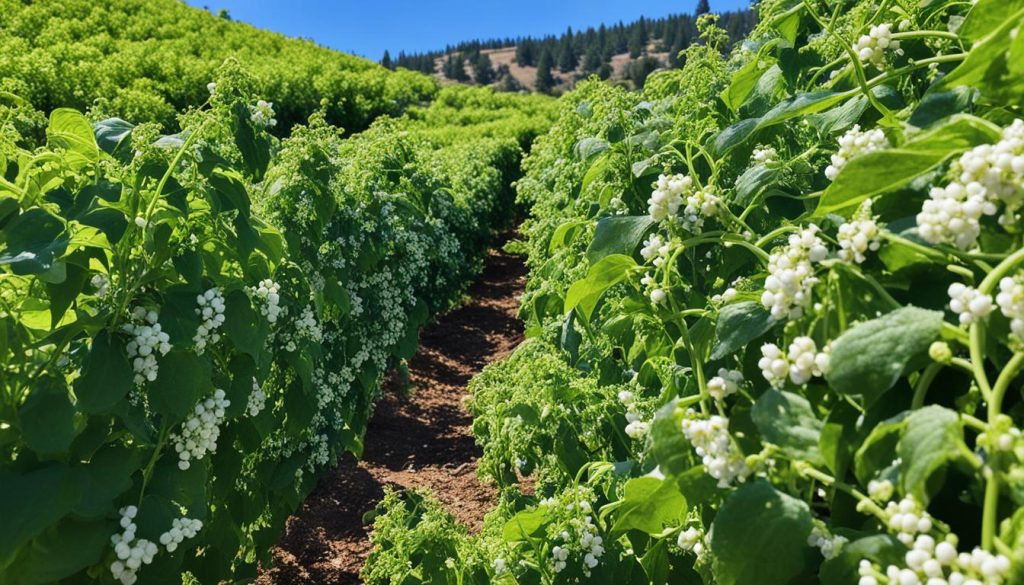
Black Pepper in Desserts: Unconventional Yet Delicious
Black pepper is not just for savory dishes. It can make sweet treats taste amazing. Adding a little black pepper can balance the sweetness and make flavors pop.
Enhancing Flavors with Black Pepper
Black pepper can make cookies, cakes, ice creams, and fruit dishes taste better. It adds a warm, complex taste. This complements chocolate, citrus, and caramelized fruits, making flavors blend well.
Black Pepper Infusions for Baked Goods
To make black pepper stand out in desserts, mix it into butter, cream, and custard. Use whole peppercorns or ground pepper. This makes every bite rich and interesting.
| Dessert | Black Pepper Infusion | Flavor Profile |
|---|---|---|
| Chocolate Chip Cookies | Black Pepper-Infused Butter | The peppery heat balances the sweetness of the chocolate, creating a delightful contrast. |
| Lemon Meringue Pie | Black Pepper-Infused Custard | The subtle spice of the black pepper enhances the brightness of the lemon, adding depth to the dessert. |
| Strawberry Shortcake | Black Pepper-Infused Whipped Cream | The peppery cream complements the sweetness of the strawberries, creating a harmonious and unexpected flavor combination. |
Trying black pepper in desserts is exciting. It opens up new flavors that surprise and delight. Black pepper can turn simple sweets into memorable dishes.
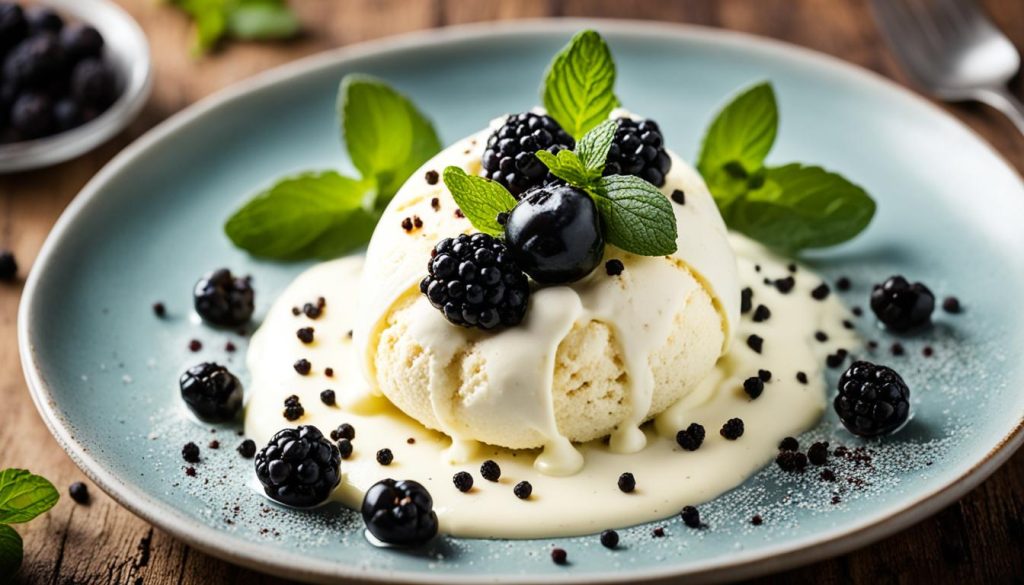
Selecting and Storing Black Pepper for Optimal Flavor
As a home cook, I know how important it is to pick and store black pepper right. The right black peppercorns can really make your dishes better.
Choose whole peppercorns over ground ones for better flavor. They keep their oils and smell better, giving a deeper taste. Pick peppercorns that are big, the same size, and shiny. Don’t take any that are small or look dull, as they might not taste good.
To keep the flavor fresh, toast the peppercorns in a dry pan first. This brings out the pepper’s spicy and earthy taste. Then, grind them with a mortar and pestle or a good pepper mill right before using.
Storing black pepper right is key for keeping it fresh and flavorful. Put your whole peppercorns in a container that closes tight, away from heat, light, and moisture. This keeps the peppercorn freshness and flavor preservation strong.
“The key to unlocking the full potential of black pepper is to treat it with the care and attention it deserves, from selection to storage.”
Follow these easy tips to store black pepper right. You’ll get to enjoy the strong, complex taste of fresh black pepper in your cooking.
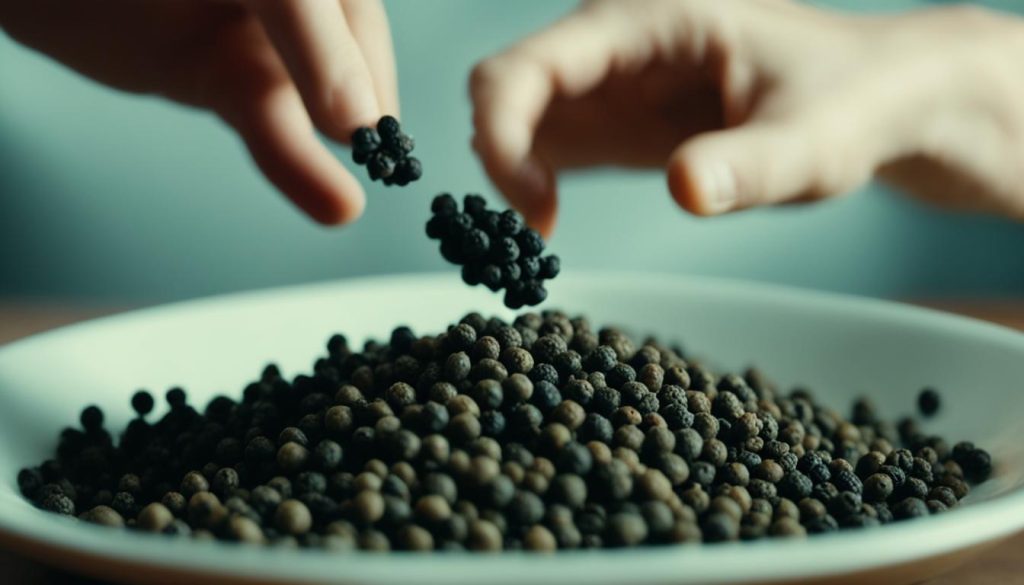
| Characteristic | Ideal | Avoid |
|---|---|---|
| Peppercorn Appearance | Plump, uniform size, deep glossy color | Shriveled, dull, or unevenly sized |
| Storage Conditions | Airtight container, cool and dark place | Exposed to heat, light, or moisture |
| Grinding Method | Mortar and pestle or high-quality pepper mill | Pre-ground pepper from a can |
Health Benefits of Black Pepper
Black pepper is more than just a spice for cooking. It’s packed with health benefits that make it great for any diet. The key ingredient, piperine, gives black pepper its unique taste and health perks.
Black pepper is known for its anti-inflammatory effects. Piperine can reduce inflammation, helping with arthritis, joint pain, and skin issues. It also helps with weight control by improving how the body uses nutrients.
- Boosts Digestion: Piperine in black pepper helps make digestive enzymes. This makes it easier to digest food and can ease bloating, constipation, and indigestion.
- Antioxidant Protection: Black pepper is full of antioxidants. These protect the body from harmful free radicals and stress, lowering the risk of chronic diseases.
- Enhances Nutrient Absorption: Piperine makes nutrients like vitamins and minerals more available. Adding black pepper to meals can make them more nutritious.
Adding black pepper to your meals is an easy way to get healthier. You can season your food, add it to baked goods, or drink black pepper tea. This spice is a great tool for staying healthy.
“Black pepper is not just a seasoning, but a nutritional powerhouse that can transform your health in unexpected ways.”
Black Pepper: A Global Spice with a Rich History
Black pepper is a key spice in many cuisines around the world. It comes from the Malabar coast of southern India. This spice has been highly valued for centuries, affecting the spice trade and food traditions globally.
Black Pepper’s Journey from India to the World
Black pepper started in the Malabar region, where it thrived in the warm climate. For a long time, it was a main spice in Indian cooking. It was also a big export, drawing traders from ancient Rome, Egypt, and Greece.
As trade grew, black pepper spread to Europe, the Middle East, and more. Its popularity was huge, changing history. European powers like Portugal and the Netherlands set up trading posts to get this spice. This led to more global trade and sharing of cooking styles.
“Black pepper was so valuable that it was used as currency, with merchants paying their taxes in the spice. Its scarcity and high price made it a symbol of wealth and power.”
Now, black pepper is a must-have in kitchens worldwide. Its unique taste and smell make many dishes better. From Indian curries to European stews, black pepper shows its big impact on food traditions. It proves its lasting importance in human history.
Elevating Fruit Dishes with a Hint of Black Pepper
I love exploring the world of flavors, and black pepper is a favorite of mine. It’s not just for savory dishes. Adding a little black pepper to sweet fruit can make a big difference. It brings out new tastes that will make your mouth water.
Knowing how to mix black pepper with fruit is key. Its strong, spicy taste can balance out the sweetness of many fruits. This makes the flavors work together perfectly. Adding black pepper to a cobbler, fruit salad, or grilled peaches can make them taste amazing.
| Fruit | How to Use Black Pepper | Flavor Profile |
|---|---|---|
| Strawberries | Add a pinch of black pepper to macerated strawberries or use it to season a strawberry-balsamic glaze. | The peppery notes complement the sweetness of the strawberries, creating a delightful balance. |
| Pineapple | Roast or grill pineapple slices and finish with a light dusting of black pepper. | The black pepper enhances the tropical sweetness of the pineapple, adding a touch of complexity. |
| Mango | Toss mango chunks with a sprinkle of black pepper and a squeeze of lime juice for a refreshing fruit salad. | The peppery kick balances the sweetness of the mango, creating a vibrant and zesty flavor combination. |
Trying out black pepper with fruit is a fun adventure. It lets you mix sweet and savory flavors in new ways. Next time you’re cooking with fruit, think about adding a bit of black pepper. You might just find a new favorite dish.
Black Pepper: A Secret Ingredient in Baking
Black pepper is not just for savory dishes. It can also make baking special. Adding it to cookies, cakes, and other sweets brings depth and complexity. It balances out sweet flavors and enhances fruity or warm tastes.
I enjoy adding a little black pepper to my recipes for a unique taste. The mix of sweet and peppery is intriguing and fun. It makes my desserts stand out, like on a rich chocolate cake or in gingerbread cookies.
Want to make your baking exciting? Try black pepper in your desserts. It opens up new flavors and can change the taste completely. Don’t hesitate to use black pepper to surprise your taste buds with something new and tasty.

